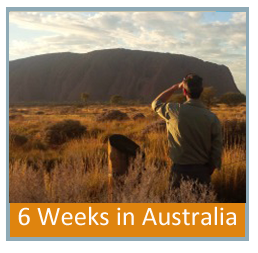Back in October, I wrote a guest post on the PhD in Parenting blog titled “Bullying is Bad. Don’t be a Bully.” It started like this:
It’s not politically correct, but I’ll say it: I’m tired of hearing about bullying.
I feel like we spend a great deal of time as a society these days talking about bullying and the importance of teaching children that bullying hurts. I think children already know that bullying hurts. That’s why children — and adults — do it.
Can we move beyond this rhetoric, this vacuous “bullies are bad, don’t be a bully,” to a more sincere discussion?
In sum, I was trying to express that although the current campaigns against bullying are well-intended, I doubted their effectiveness in actually getting to the root of the bullying incidents taking place in hallways, school buses, and facebook pages across North America.
I asked (begged? pleaded?) that we try and dig deeper on this. In response, I received so many insightful and heart-felt comments.
Many questioned our educational system’s response of “zero tolerance.” For example, Erin wrote:
“It’s so ironic that our solution to bullying is so often an authoritarian, disciplinarian, zero tolerance response, which just continues the cycle of powerlessness and shame that drives both bully and bullied.”
Most often, if a bullying incident is brought to a teacher’s attention, the bully(ies) are hauled in and forced to apologize to the bullied. We all know what happens here: a false apology is given, a punishment doled out, and the cycle continues. Don’t get me wrong, I’m not engaging in teacher-blaming here. From what I can see, teachers haven’t been given any substantive training on how to actually deal with bullying. And their response is similar to what we, as parents, are programmed to do as well. However, as Alyson Schafer notes, the unintended result when we insist that a child apologize is often as follows:
The child beings to feel angry at their parents and instead of owning the responsibility for their behavior they feel the other party actually got them in trouble with their parents, so they don’t feel empathy or remorse anymore. In fact, they now feel justified and not responsible!
Which brings me to wearing pink. I love the original story behind why wearing pink is a call against bullying, but I can’t help but wonder if Manitoba high-school teacher Michael Zwaagstra is bang-on the money when he says:
“I mean, frankly, there’s a certain amount of irony that, to combat bullying, we’re going to put pressure on everyone to wear the same type of shirt.”
So yes, raising awareness about bullying is good in and of itself, but it is not going to necessarily make the difference for our kids right now. Just as raising awareness around mental health/illness is good in and of itself, it’s not good enough — we need a health care system that is prepared, properly resourced, and backed by strong research programs to make a difference.
While I still don’t have the answers, I don’t want to end this post feeling like there aren’t any. So I will close will this very compelling recount of what one mother, Michelle H, experienced with her son and shared in the comments section of that original post on bullying:
What is also missing from this dialogue is one level of why: when children are presented with behavior they don’t like, don’t understand or are afraid of, they respond the way adults around them respond – they punish the perpetrator (or sometimes the scapegoat.) My son didn’t understand that kids perceive bossiness as hurtful. His friends, instead of telling him to stop, responded by torturing him – which ranged from name-calling to pushing to stealing and hiding his stuff. He had no idea why this was happening.
The problem was that these kids saw HIM as the bully, and had no other tools with which to handle the problem. The fact that a huge imbalance existed between the initial social missteps my son made and the actions of these kids did not occur to them.
Bottom line: schools need to offer kids social skills training. We need trained staff at lunch and recess who can keep an eye out for these kinds of problems and give kids tools to navigate them appropriately. In our case, eventually the school hired someone with a background in social work who “got it,” sat all the kids down separately and taught them appropriate ways to handle the situation, while holding them accountable for their bad behavior. It was amazing to me (I’d been asking the school to intervene for some time) how quickly this solved the problem, and I realized that the reason bullying is often ongoing is that replacement behavior is rarely offered.
Please feel free to share your thoughts on bullying and what we, as parents and adults in our community, can do to help. In addition, if you know of any helpful resources for parents or kids (books, movies, etc), please share those too!
Image source: The image above is taken directly from the PinkShirtDay.ca site. Don’t you just love how it perpetuates the stereotype that a bully is the big dopey boy with turned up baseball cap, while the bullied is the small nerdy boy wearing glasses and a propeller hat? Please.

















I would love it is a (that) social worker would put those tools out to the public so that we as parents would know, or at least have an inkling of an idea, of how to deal with these situations. Because really, there is a fine line between bully and bullied and it is usually crossed so many times over. It is all very confusing to kids and adults alike. I know there is no one solution fits all, but any help would be appreciate.
If I can locate a social worker with expertise in this area, I will see about interviewing him/her and will share what I learn here on the blog. I agree that there’s a fine line and it’s hard to tell what is the right way forward.
that would be awesome Julie!
Just like the image for Pink Shirt Day shows, too often ‘bullies’ are vilified and simply written off as ‘bad kids’. My experience is that when a child turns to bullying behavior, there’s something else going on, something they’re struggling with that leads them to lash out with bullying behavior. Obviously, the bullying is not okay. But this child needs help, too, and needs our support to ‘do good.’
Yes, exactly! The term “bully” is a label that I don’t care for. It’s a child that needs some help in some way or another — not someone who needs to be given a negative label for his school career. Children aren’t born “bad” and excluding them from a community isn’t going to help them at all.
As a person who faced a fair amount of bullying as a child I find the whole conversation about bullying to be frustratingly simplistic. Kids are told to all wear pink to combat bullying, yet when my daughter was in grade one the only boy in her class that actually did wear pink was teased by the other boys at recess. A lot of good that did!
And, as Alyson Shafer recently posted on her Facebook page, zero tolerance policies for bullying to nothing to improve the relationships of the individual children involved. It doesn’t help the bully realize that what they are doing is wrong.. It doesn’t help the bullied child learn how to respond to bullying behavior.
When I was a kid I had a spinal curvature called lordosis. If you read the Judy Bloom novel Deenie growing up, you might be familiar with scoliosis, which is a side to side curvature of the spine. Lordosis, on the other hand, is an inward curve of the spine. Basically, the spine curves inward mid-torso and then outward near the bottom of the spine. As a result of the curve, the person’s rear end sticks out farther than your average person’s. Although I still have lordosis, my curvature appeared much more pronounced in my pre-teen years and I received a great deal of teasing and taunting about the way my rear stuck out. Kids would walk by me in the schoolyard, imitating my appearance and laughing. It didn’t help matters that I was a sensitive child, prone to tears.
One of the girls who tormented my the most was the older sister of a girl in my class. She and her friends picked on me regularly. Since they were so much older than me I was afraid to stand up for myself, but when the younger sister also started to make the same taunts I spoke out. I told her I didn’t walk like that on purpose. I had a curvature of the spine, and even had to see back doctors for the condition. Imagine my amazement when a few days later I received a phonecall one evening from the older sister. She wanted to apologize to me. She was sorry she’d teased me. She didn’t realize that I had a curve in my back. I was so surprised I barely knew what to say. I mumbled thanks for apologizing and that was it. And the bullying about my back diminished immediately, then eventually went aware. I still occasionally got bullied by other kids about other things, but that episode with those girls was over. They’d learned something. They changed their ways.
Anyway, my point in all that is that getting those girls to wear pink to combat bullying probably wouldn’t have changed their behavior. I doubt they even would have considered their behavior to be bullying. They thought that the way I walked was some sort of attention-grabbing behavior and I needed to be knocked down a peg or two. The only reason they changed their behavior is because they learned new information that helped them see that what they were doing was wrong. It took communication to solve the issue. Not pink, not zero tolerance. Communication.
Mary Lynn, Thank you for sharing your story. It must have been really hard to live through the whole thing, but it certainly revived my faith in humanity to hear that the bullying did stop. As for remembering the book Deenie … of course, I remember that book! (I actually have mild scoliosis and did not require any treatment, but I do remember a girl in our class who had a brace for a number of years.) I can vividly picture the cover of it right now. Judy Blume really wrote some powerful stuff for teens, didn’t she?
Amazing article. Very informative and very well-written. I want you to know that I agree with you here. Also, we should encourage our kids to speak up when they are being bullied or whenever they see or know someone that is being bullied and do something about it. Silence will just give bullies more power because they know that they can just do whatever they want to anyone and get out of it as if nothing ever happened. This leaves a severe damage to the victim and most of them stay silent and depressed until they can’t handle it anymore.
Thank you so much for your comment Janet. From what I’ve read, what you say is bang-on: the bystanders have a great deal of power. If there is silence around bullying, then like you say, the power goes to the bully.
I was a dreadful bully. I gave wedgies, teased kids about their acne, and called girls horrible names in front of large crowds. This new approach to bullying makes me sick to my stomach, because I know first-hand just how small and insignificant I felt at the height of my behaviour. I was as close to incapable of compassion and kindness as it is possible to imagine. I make no excuse for the fact that I made life almost unbearable for so many fellow students but beg everyone to shift some of the focus to where it can make the biggest difference.
In junior high a teacher caught me bullying one of the “everyone’s target” kids and slammed me against a locker. I was terrified. Sadly, it only taught me that beyond hurtful words, I could use this new physical tool to humiliate others and take the focus off my pitiful, loathsome self. I became a better bully.
Look at the way we police the world with threats, bombs and missiles and ask yourself if we are teaching our children to respond to insecurity and inadequacy in a caring manner. We are role models for the worst sorts of bullying from the international level on down.
I can now usually treat others with compassion and kindness because I know how it feels to be okay with myself in a world full of inadequacy messages. When I treat others poorly it is a result of uncertainty about my acceptance in this society…ego struggling to make sure I belong. We aren’t spending enough time teaching kids why it is okay to be who they are. We aren’t yet role modeling that sort of mind set because our economy needs to grow on the back of our discontent. When we can do that kids like me will know there is a third option that is neither hammer nor nail.
Hi Vernon, I really appreciate you sharing your story and opinions with us here. Labeling a child as a “bully” will likely only serve to alienate him/her even more. That child needs help. I’m not sure what that help is, but your idea of teaching and modeling acceptance seems to make sense to me.